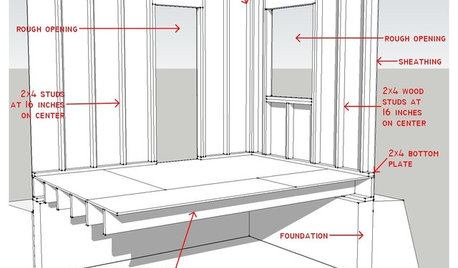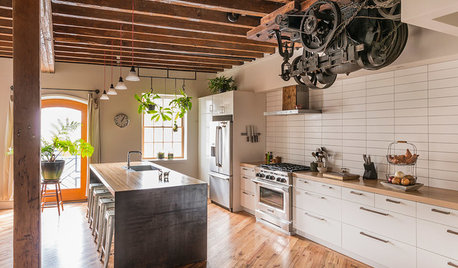Balloon Frame House - Blown Insulation Caveats?
newtonian
18 years ago
Related Stories

GREEN BUILDINGInsulation Basics: Heat, R-Value and the Building Envelope
Learn how heat moves through a home and the materials that can stop it, to make sure your insulation is as effective as you think
Full Story
GREEN BUILDINGInsulation Basics: Natural and Recycled Materials
Consider sheep’s wool, denim, cork, cellulose and more for an ecofriendly insulation choice
Full Story
MATERIALSInsulation Basics: What to Know About Spray Foam
Learn what exactly spray foam is, the pros and cons of using it and why you shouldn’t mess around with installation
Full Story
REMODELING GUIDESCool Your House (and Costs) With the Right Insulation
Insulation offers one of the best paybacks on your investment in your house. Here are some types to discuss with your contractor
Full Story
GREEN BUILDINGInsulation Basics: Designing for Temperature Extremes in Any Season
Stay comfy during unpredictable weather — and prevent unexpected bills — by efficiently insulating and shading your home
Full Story
REMODELING GUIDESKnow Your House: Components of Efficient Walls
Learn about studs, rough openings and more in traditional platform-frame exterior walls
Full Story
WINDOWSSteel-Framed Windows Leap Forward Into Modern Designs
With a mild-mannered profile but super strength, steel-framed windows are champions of design freedom
Full Story
GREEN BUILDINGHouzz Tour: Pickle Factory Now an Energy-Wise Live-Work Space
A charming but poorly insulated 1880s Philadelphia commercial building becomes a spacious energy-efficient home and studio
Full Story
GARDENING GUIDES7 Ways to Rethink the Shrub
These versatile plants can do more than frame your home’s foundation or line an entry walk
Full Story
REMODELING GUIDESThe Hidden Problems in Old Houses
Before snatching up an old home, get to know what you’re in for by understanding the potential horrors that lurk below the surface
Full StorySponsored
More Discussions










housekeeping
DruidClark
Related Professionals
Hammond Kitchen & Bathroom Designers · Palm Harbor Kitchen & Bathroom Designers · Peru Kitchen & Bathroom Designers · Queen Creek Kitchen & Bathroom Designers · Reedley Kitchen & Bathroom Designers · Biloxi Kitchen & Bathroom Remodelers · Linton Hall Kitchen & Bathroom Remodelers · Morgan Hill Kitchen & Bathroom Remodelers · Patterson Kitchen & Bathroom Remodelers · Port Angeles Kitchen & Bathroom Remodelers · Roselle Kitchen & Bathroom Remodelers · North Bergen Architects & Building Designers · Panama City Beach Architects & Building Designers · Providence Architects & Building Designers · Rocky Point Architects & Building DesignersnewtonianOriginal Author
DruidClark
terryr
jimg
newtonianOriginal Author
Vermonster
newtonianOriginal Author
eduardo1274_aol_com